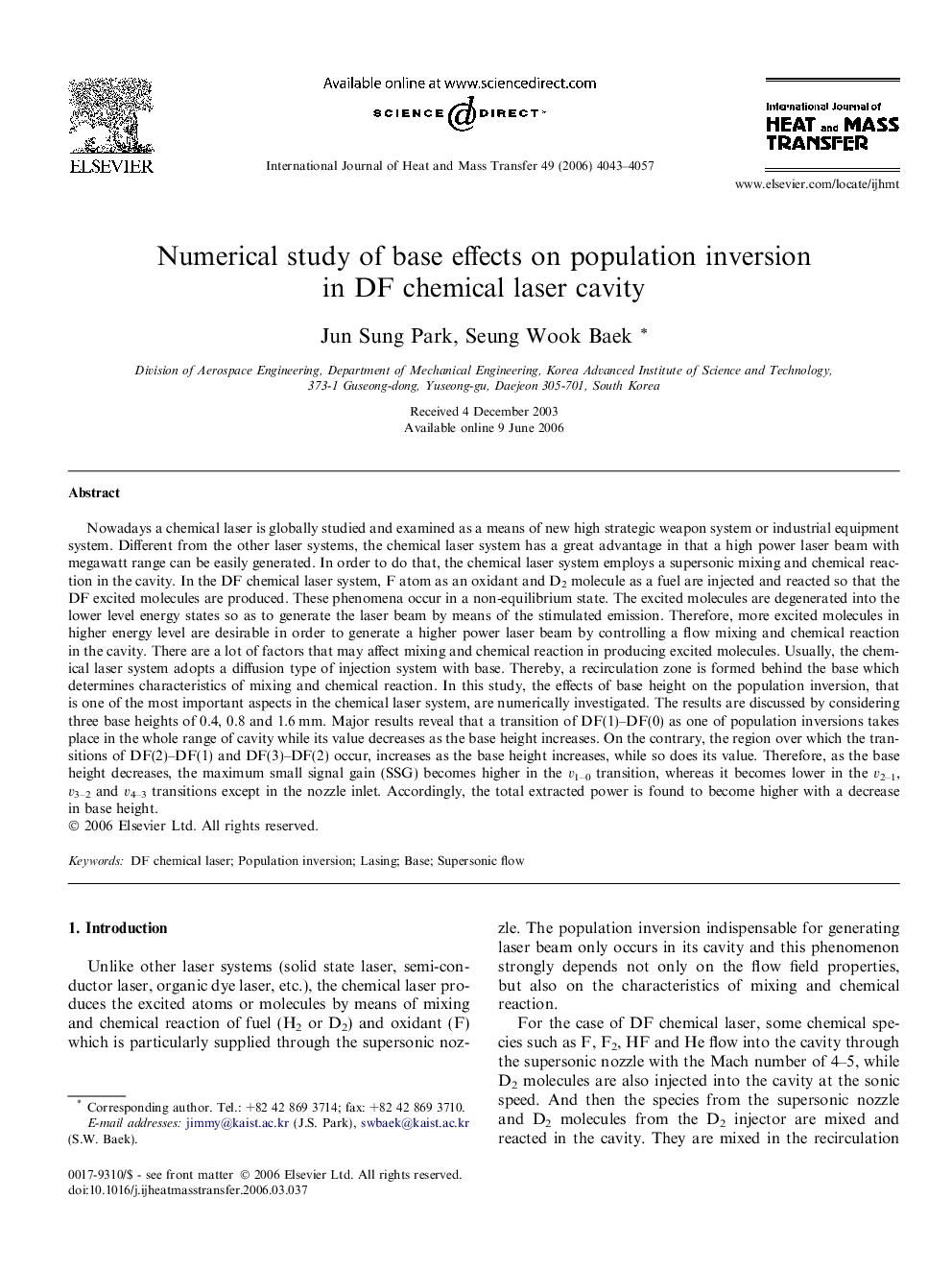| کد مقاله | کد نشریه | سال انتشار | مقاله انگلیسی | نسخه تمام متن |
|---|---|---|---|---|
| 661636 | 1458168 | 2006 | 15 صفحه PDF | دانلود رایگان |

Nowadays a chemical laser is globally studied and examined as a means of new high strategic weapon system or industrial equipment system. Different from the other laser systems, the chemical laser system has a great advantage in that a high power laser beam with megawatt range can be easily generated. In order to do that, the chemical laser system employs a supersonic mixing and chemical reaction in the cavity. In the DF chemical laser system, F atom as an oxidant and D2 molecule as a fuel are injected and reacted so that the DF excited molecules are produced. These phenomena occur in a non-equilibrium state. The excited molecules are degenerated into the lower level energy states so as to generate the laser beam by means of the stimulated emission. Therefore, more excited molecules in higher energy level are desirable in order to generate a higher power laser beam by controlling a flow mixing and chemical reaction in the cavity. There are a lot of factors that may affect mixing and chemical reaction in producing excited molecules. Usually, the chemical laser system adopts a diffusion type of injection system with base. Thereby, a recirculation zone is formed behind the base which determines characteristics of mixing and chemical reaction. In this study, the effects of base height on the population inversion, that is one of the most important aspects in the chemical laser system, are numerically investigated. The results are discussed by considering three base heights of 0.4, 0.8 and 1.6 mm. Major results reveal that a transition of DF(1)–DF(0) as one of population inversions takes place in the whole range of cavity while its value decreases as the base height increases. On the contrary, the region over which the transitions of DF(2)–DF(1) and DF(3)–DF(2) occur, increases as the base height increases, while so does its value. Therefore, as the base height decreases, the maximum small signal gain (SSG) becomes higher in the v1–0 transition, whereas it becomes lower in the v2–1, v3–2 and v4–3 transitions except in the nozzle inlet. Accordingly, the total extracted power is found to become higher with a decrease in base height.
Journal: International Journal of Heat and Mass Transfer - Volume 49, Issues 21–22, October 2006, Pages 4043–4057